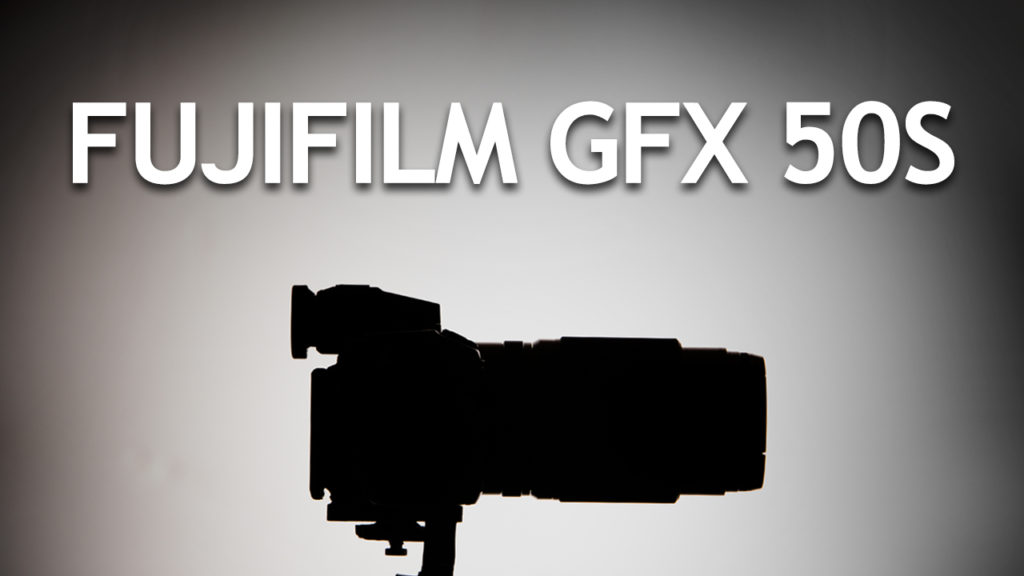Download our test images from the Fujifilm GFX 50S here. RAW conversion capabilities are coming but you can view the jpegs now and then review the RAW when it’s available.
Hi, this is Jay P. Morgan and Kenneth Merrill. Today on The Slanted Lens we have a very special guest- Michael Bulbenko from Fujifilm. Michael is with us because we are reviewing the Fujfilm GFX 50S Mirrorless Digital Medium Format camera. I am so excited about this camera. Fujifilm is not sponsoring this review, but I’ve wanted to get my hands on one ever since it was announced. Peter Poremba, over at Dynalite, introduced me to Michael at WPPI and we were able to connect with him to do this review. It was a pleasure to meet him and get to use this camera. Let’s take a look.
Fujifilm GFX 50s Mirrorless Camera
The Fujifilm GFX 50s is a mirrorless camera. That means it’s quieter, and there’s less movement when taking a photo. At 51 megapixels of resolution that’s important. There is an electronic shutter if you want to be completely silent. Although you can go up to 16 thousandth of a second, but you do have to deal with rolling shutter in that case. A hybrid between electronic shutter and focal plane shutter is available called electronic front curtain shutter. Other smaller cameras use that as well. It leaves the front curtain open which cuts response time.
Fujifilm Lenses
There are three lenses available with the Fujifilm GFX right now- the 63mm f2.8, 120mm Macro f4.0, and the 32-64mm f4.0. Fujifilm is also soon introducing a 110mm f2.0. It’s harder to get fast glass that performs well with medium format sensors. However, these lenses work very well in low light conditions. The Fujifilm GFX sensor and processor work together to produce images with very low noise. The larger format sensor allow you to shoot wider and still give a very shallow depth of field.
Digital Noise
The image Michael showed me from the Fujifim GFX at ISO 3200 was reminiscent of film grain more than digital noise. It was a beautiful portrait. The Fujifilm engineers in Japan have been able to get rid of chroma noise in their images. It makes for very smooth images. We ran an ISO test using the Rosco LitePad. The blacks and transitions were gorgeous. It really was about 1600 before we started to see that grain, but we didn’t see any RGB artifacts in it. You can view and download those images here.
Specs
You’ll get three frames per second with the Fujifilm GFX. The buffer isn’t bad as long as you use high speed SD cards. We loved the sub monitor display on top of the camera. You can customize what that will show you so that you don’t even have to have any info on the viewfinder. The LCD viewfinder are tilting and also pop out. There’s also an optional vertical grip. The GFX has a dedicated auto focus joystick, with over 400 auto focus points.
The electronic viewfinder is an organic LED. It’s also removable and comes with the body. Later on there will be an option that will allow you to tilt it 45 or 90 degrees. While it does 1080 video it does not have 4k. The measured dynamic range of the Fujifilm GFX is 14 stops.
Battery life on the GFX is not as good as on a DSLR because of the live view. It runs about 400 shots. With the handgrip you can increase that to about 800. Plus there is an A/C adapter. The battery is on the side, not on the bottom, so you can change it while it’s on a tripod.
The camera also has interval timer shooting for creating a timelapse.
It’s 50 megapixel at 44x33mm, so significantly larger than full frame. You can view the full official specs here.
Wrap-up
This camera is really ideal for portraits, wedding, landscape, still life , and fashion photographers. It has that medium format feel with separation between background and subject. The color is beautiful. This was our favorite still camera we’ve tested so far. But if you’re a sports photographer or need more frames per second this is not the camera for you. The only thing we weren’t completely pleased with was the electronic shutter because of the rolling shutter.
My sense overall is that I love it. The Fujifilm GFX 50S feels good in my hands. It’s a great price point, the color of the images is beautiful, and we were very impressed with the lack of noise in the images. Don’t forget to download the images we shot with it and you can see for yourself.
Be sure to check out the fantasy portrait and hands-on review I did here: Fantasy Portrait with the Fujifilm GFX


